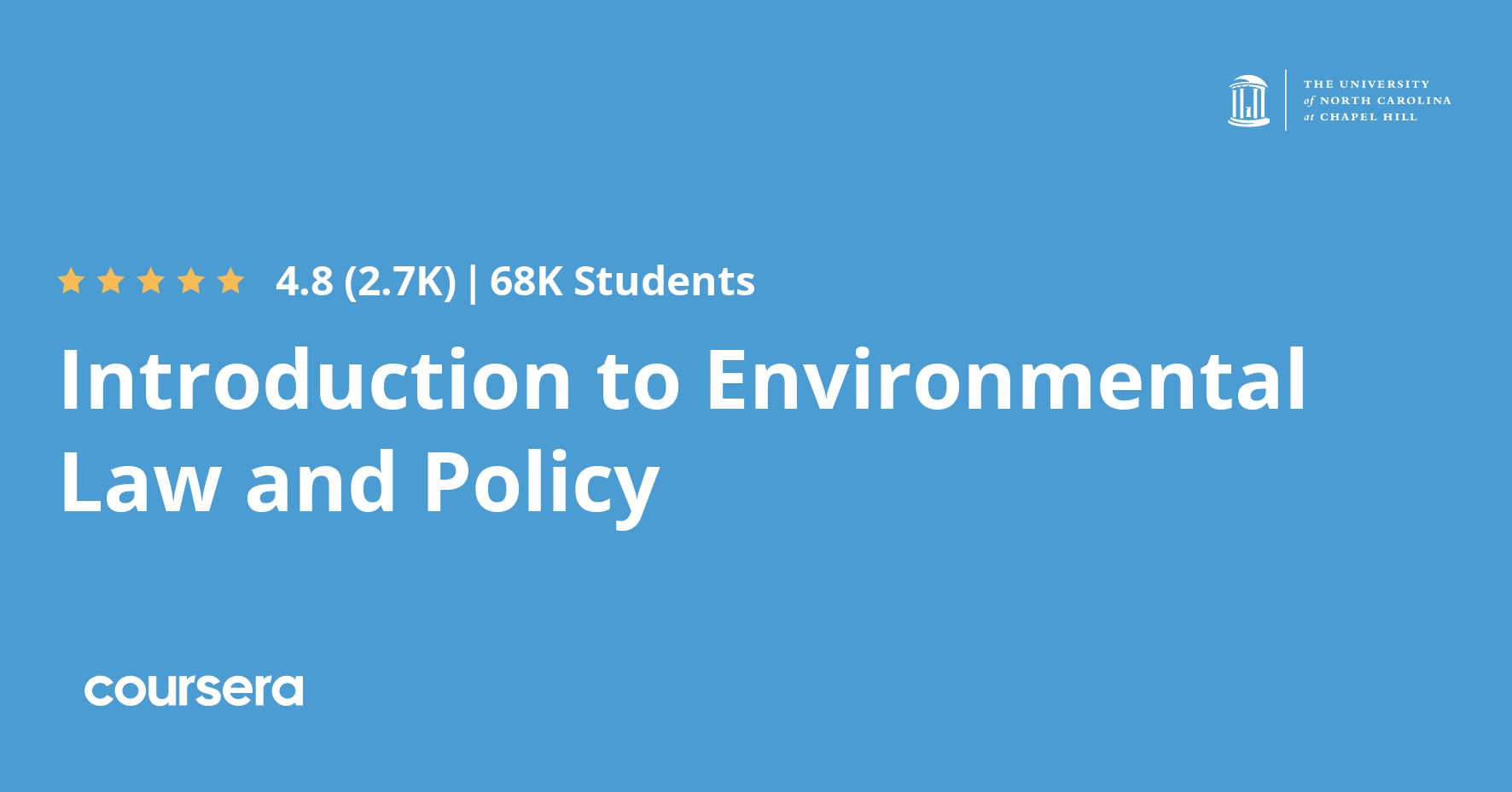Description
Environmental law may be the one institution standing between us and planetary exhaustion. It is also an institution that needs to be reconciled with human liberty and economic aspirations. This course considers these issues and provides a tour though existing legal regimes governing pollution, water law, endangered species, toxic substances, environmental impact analyses, and environmental risk.
Note: The Environmental Law & Policy Course will close for new learner enrollment on February 22, 2019. Learners who have already enrolled will continue to see it on their Coursera Dashboard as long as they remain enrolled in the course. If you are currently enrolled in this course, please see the announcement sent on February 19, 2019, for additional details.
What you will learn
Common-Law Approaches to Environmental Problems
As the course does not presume any previous knowledge of the law or legal experience, it begins by teaching students how to “read” cases, to learn from judicial opinions in real-life disputes how judges articulate and apply legal principles. We focus on the law of nuisance, starting with cases involving simple disputes between neighbors, and then move to cases involving air and water pollution and even a very recent case on the introduction of exotic species into a river system! We end the week, as we’ll end every week, with a session spent on legal theory and policy, considering, this week, the relative strengths and weakness of the court system as an institution addressing environmental problems, in comparison to other institutions such as administrative regulators and the free-market system.
Property and the Environment
It’s impossible to understand environmental law without also understanding the important role that private property plays in people’s lives and the way in which property law recognizes these values. After using two cases involving property rights to water to introduce ourselves to property law, we’ll use the American constitutional approach to “takings” of property to determine when governments are forced to pay property-holders when environmental requirements infringe too much on private property rights. These cases are at the crux of an evolving philosophical dispute between whether we look at land merely as a personal commodity or as part of larger ecosystems that, often, demand recognition and require changes in personal behavior. In our “theory” session, we’ll introduce ourselves to a very powerful and famous economic model, the tragedy-of-the-commons model, that explains why markets often cannot adequately protect commonly held resources such as the oceans and atmosphere, and how legal regimes may be needed to correct the problem. We also post this week a peer-review essay exercise, which is mandatory for students wishing to obtain a Statement of Accomplishment with Distinction.
Two Famous Statutory Programs: Environmental Impact Analysis and Endangered-Species Protection
This week we start with perhaps the most influential American environmental statute ever enacted, the National Environmental Policy Act (“NEPA”), and its requirement for environmental impact analysis of certain actions that might significantly affect the environment. Over 70 countries have enacted programs similar to this one. Then, we study perhaps the strongest American environmental statute ever enacted, the federal Endangered Species Act (“ESA”) and study cases under the ESA that are, among other things, at the cutting edge in the tension between private property and environmental protection. In our theory session, we begin to discuss issues of politics and political economy, and consider a range of topics in the political economy of environmental law.
Risk Analysis and Toxic Substances: Pesticides, Trade Disputes over Synthetic Hormones, and the Cleanup of Contaminated Sites
This week we shift from land-use-related issues to the central role that “risk” plays in the regulation of toxic substances, pollution-control, and environmental law generally. We begin with an analysis of a regulatory decision involving 2,4,5-T, the active ingredient in herbicides (and in the notorious “Agent Orange” herbicide used by the United States in the Vietnam War), and learn how concerns over the “risk” of harm amplify the power of environmental law. We then analyze the role risk played in an ongoing dispute between the United States and Canada (on the one hand) and the European Community (on the other) over synthetic growth hormones given to cattle in North America. We shift to considerations of risk in the clean-up of sites contaminated with hazardous substances under a famous American statute, the so-called “Superfund” statute. in our theory session, we look at two economic dimensions of risk that explain why people rationally concern themselves with worst-case possibilities and also concern themselves with how risk is fairly (or unfairly) distributed.








